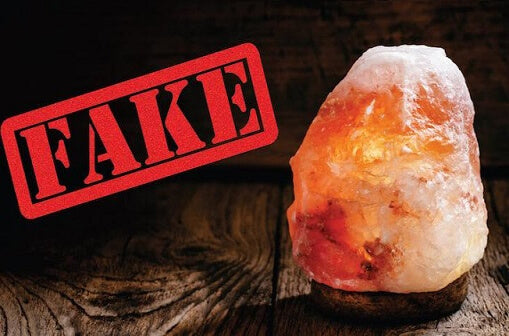
If you’ve ever been in a crystal shop or wellness centre, chances are you’ve seen a Himalayan rock salt lamp. Have you ever considered though, that it could have been a fake? It's more common than people think, ever since the rise in popularity of salt lamps, profiteers and scammers have tried to sell cheap imitations for profit.
Though a genuine pink salt lamp provides a variety of health benefits, including air purification and an unmistakable pink/orange glow, a fake salt lamp is nothing more than a pretty ornament (sometimes not even that, if its a bad fake!)
Learning to identify the key differences between a genuine and fake lamp is vital before making a purchase, and will save you from salt lamp scams.
As with anything in the market today, authentic salt lamps can sometimes be difficult to find, due to many vendors selling fake salt lamp imitations. The most common fakes are pink coloured selenite lamps sold as salt lamps, and plastic lamps sold as salt lamps.
However there is an even BIGGER issue than fake salt lamps, and that is, low-quality, sub-par salt lamps that are not only useless but potentially dangerous, and last only a few months! Since our conception we have been committed to providing the best of the best, every component is certified and cross checked, and the salt itself is sourced and crafted ethically, with attention to detail. All this to create our signature salt lamps, unlike any other. If you want to read more about the quality difference please visit Our Lamps page.
So where do real salt lamps come from? Authentic Himalayan salt is sourced from the mines that run deep into the mountainous region of Northern Pakistan, in the foot hills of the Himalayan mountain range.
This is the only place in the world where pink salt is found - and the origin of all authentic salt lamps - your seller should disclose the origin either as a stamp on the bottom of the lamp, in a brochure or otherwise.
If the salt lamp didn’t come from Pakistan, it’s most probably fake.
Spotting the Salt Lamp Hoax
So how can you spot a fake Himalayan salt lamp when fakes often look almost identical to the real thing? For the untrained eye, fake salt lamp identification may be challenging.
Fortunately, these tried and tested tips can help you put an end to the Himalayan salt lamp hoax, and purchase a real salt lamp instead.
1. The salt lamp is cheap, and it’s made of white crystal.
This is not to judge inexpensive products as low-quality items, however a real Himalayan salt lamp costs between $40-60. Beware of lamps being sold significantly cheaper than that, especially on eBay and Amazon where anyone can make a listing.
A real Himalayan salt lamp has an orange or warm pink hue, which is its normal colour. But, the colours can vary even in authentic lamps.
There are authentic white himalayan salt lamps as well, but these are rare and as expected, pricey. A salt lamp with a white crystal should be more expensive than a pink Himalayan salt lamp of similar size. If it's the same, or cheaper, it's likely a fake.
2. The salt lamp is too bright.
An authentic Himalayan salt lamp has a warm and cozy colour, a little dim in some parts, but is definitely not overly bright. It should not emit too much light the way an incandescent bulb does.
The light from real salt lamps is also uneven because the salt structure is uneven in its natural form. Your lamp should do the same, to test this just rotate the lamp slowly and see if the light patterns on the wall change. If it's all even, you may have a fake on your hands.
At times it may seem like your salt lamp is losing colour as well. This is also a bad sign indicating your salt lamp was not genuine.
3. It doesn’t break!
Durability is a good thing, but not for salt lamps. In fact, they are extremely fragile and must be held gently. Accidentally dropping them could chip them or even break them – not surprising considering they are made of crystals.
Many lamps will show a bit of chipping right out of the box as part of the normal handling and transport process.
But a solid lamp that doesn’t even chip off after rough handling is more than likely a fake.
4. The lamp doesn’t sweat.
Real salt lamps are hygroscopic – they attract water molecules. When the molecules are combined with the heat of the lamp, the lamp dries out and then releases the molecules into the air.
In this process, small beads of water should form on the lamp. The more humid an environment is, the more “sweat” is formed on the lamp.
If your lamp is not sweating at all, especially in humid environments, it's definitely a strong candidate for being a fake.
5. Poor or no return policy.
Since real salt lamps are fragile, their manufacturers should have flexible return policies in case the product gets damaged during handling or shipping.
Check if the lamp you're buying has any “No Returns” label, and if so turn away from it. Reputable sellers like The Salt Lamp Shop offer returns and transparent customer support.
6. There are no real benefits.
This one should be approached with caution. Because not everyone is going to experience any real health improvements from their salt lamps, and even if they do not everyone will notice them right away. So be careful when judging the authenticity of your lamp by this measuring stick.
However, most people should notice a difference within 2 weeks of getting their salt lamp. As long as your lamp was an appropriate size for you room you will notice the cleaner air, less moisture and the like.
If you experience no difference at all then you might want to check again using the first 5 points in this list if your salt lamp is authentic or not.
7. It's large but light weight.
Salt is a heavy mineral. Your salt lamp should be quiet heavy. If you notice that you can easily pick up and handle your salt lamp even though it is on the larger side, then there is a good chance that it's made from imitation salt and not the real deal.
8. It came in shabby packaging.
Scammers and counterfeits sellers usually just want to make a quick buck. So they usually provide very poor packaging, or no packaging at all.
If your salt lamp came without proper packing material, or came out looking used or dirty, then it could be a sign that your salt lamp is not authentic.
9. It's pure pink, red or another colour
Usually salt lamps are of a pinkish orange colour. This can vary though since different blocks of himalayan salt mined from different parts of the mine can have variations in colour. However they all have a certain depth and earthiness in their appearance.
An authentic salt lamp should not be too even in it's colour or pure pink or red. If your lamp is pure pink or red, or it has a a strong plastic-like shine, it could be a fake.
10. The base is poorly assembled
Salt lamp bases are usually attached to the lamp via screws at the bottom. Take a look at your lamp and if it looks like it's poorly assembled; where the base is not aligned with the lamp; or where screws are not fully in; or are in but at an angle; or if they just have rust on them. Then it's likely that your lamp is a fake, as authentic salt lamp sellers provide a higher quality product.
3 Tricks to Know if Your Salt Lamp is Real
There's multiple ways to test your lamps authenticity. The first is to try to chip away a bit (just a tiny bit) of the lamp. Real salt is fragile and will easily give way to a firm chip from a knife. On the other hand if nothing happens, red flags should be raised.
Rotate the lamp while its on and notice whether the light patter on the wall moves along with it or not. Real salt lamps emit uneven light so you should be able to detect this change easily. If you see no change and the light is even on all sides, the you likely have a fake.
Last but not least. Lick it! Yes, we know this sounds a bit unorthodox but at the very least your lamp should be very salty. Be careful though, you don't want to ingest any of the dust your lamp collects as it purifies the air. Make sure you clean the part of the lamp you are about to lick with a damp cloth. Just a tiny taste of it should let you know if atleast the surface of it is salt.
Some Tips and Precautions
Save yourself the trouble of purchasing a fake Himalayan salt lamp. Inquire about its origins and test the item before you take it home. Also be sure to review the manufacturer’s return policies.
In case you’ve already bought one, be mindful of how the lamp works. You should at least be able to see some changes and improvement in your health after a 2 weeks of using the salt lamp.
Being a smart consumer is the key to spotting real and fake Himalayan salt lamps. Don’t be afraid to ask for a replacement the moment you see the aforementioned signs.
While they both can look good on your desk or nightstand, the real salt lamp will always keep your home clean and provide great health benefits, while the fake lamp won't.
We're proud to stock original salt lamps made with quality components and top grade Himalayan salt.
We hope you enjoyed this read and if you have any questions comments or experiences to share leave them in the comments below and we'll respond!
From, The Salt Lamp Shop
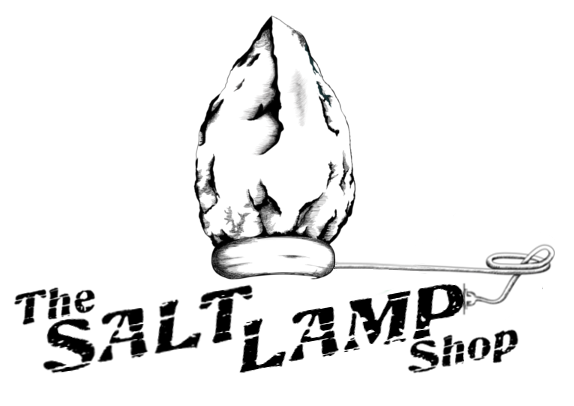


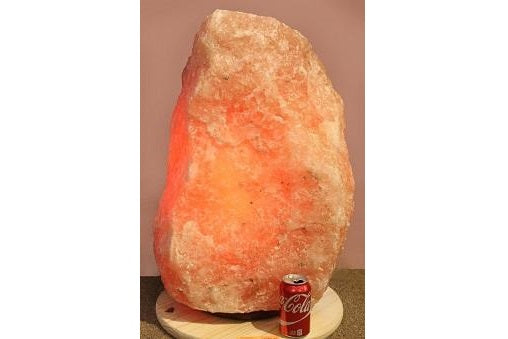
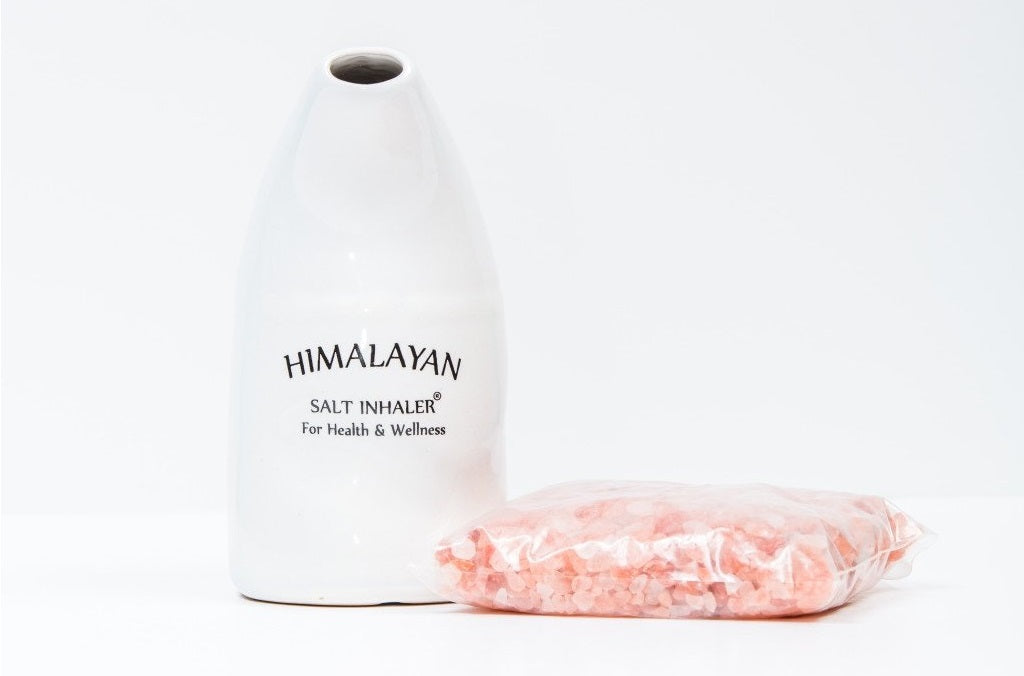
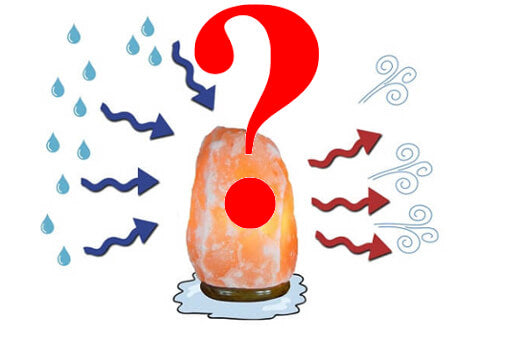
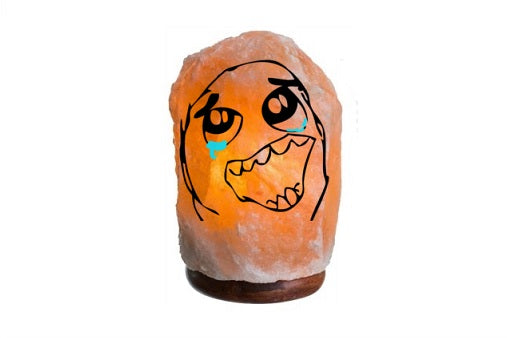
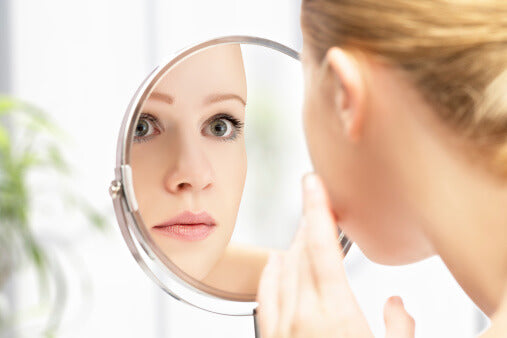
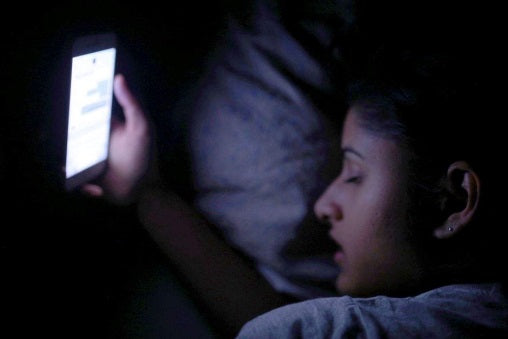
Comments
@Danuta maj
We have not had any reports like that, and depending on who you got the salt lamp from it could be anything, sometimes chemicals are added to the lamp as well to prevent its natural “sweating” but it’s unhealthy and unnatural, we do not process our lamps like that. Hope you find the answer :)
Bought 2 big size lamps in a store in Sedona AZ and 1 on Amazon big size as well Set them all in a house .2 in bedroom on night stands and 1 in living room . They seem to meet standards u talking about however I’ve noticed that some a day or 2 I’ve developed severe eyes tearing and sort of watching inside my nose and sort of staffed nose that doesn’t seem to be a beginning of cold or typical flu. Not sure if it’s coincidental or maybe sort of negative response to negative ions ?!! Will wait a bit longer and if symptoms won’t go away will turn them off and see if symptoms go away!!
If so it might have something to do with lamps!!
Do you have any reports of the same nature
Cheers